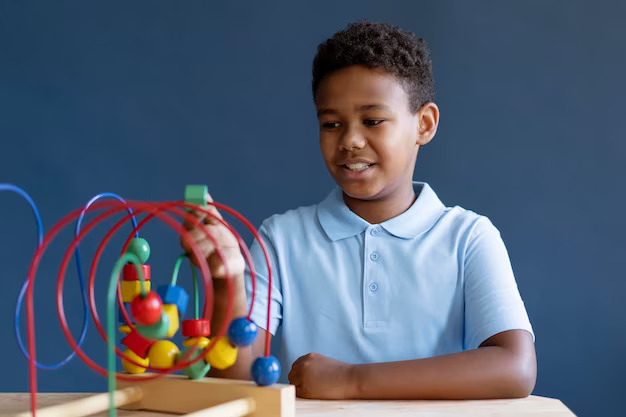
Embarking on a journey of discovery, STEM (Science, Technology, Engineering, and Mathematics) challenges stand as dynamic tools poised to ignite curiosity and foster critical thinking in the minds of our young learners. These challenges transcend traditional classroom methods, providing hands-on experiences that not only captivate children with the wonders of STEM subjects but also nurture essential cognitive skills crucial for their future. As we delve into the transformative impact of STEM challenges, we open a pathway to unlock the full potential of young minds, encouraging them to actively engage in the fascinating realms of science, technology, engineering, and mathematics.
Section I: Unveiling the Power of STEM Challenges in Education
1.1 Beyond the Textbooks:
STEM challenges usher students beyond the confines of traditional textbooks, immersing them in real-world problem-solving scenarios. By offering practical applications of theoretical knowledge, these challenges instill a profound understanding of STEM concepts that extends beyond rote memorization.
1.2 Tactile Exploration:
At the heart of STEM challenges lies their hands-on nature. Whether constructing simple machines or experimenting with chemical reactions, these challenges invite children to explore, touch, and manipulate their surroundings. This tactile engagement not only solidifies academic concepts but also nurtures an innate curiosity for understanding the intricate workings of the world.
1.3 Fostering a Growth Mindset:
STEM challenges actively cultivate a growth mindset in children, encouraging them to view challenges not as insurmountable obstacles but as opportunities for growth. Through iterative problem-solving, children learn that setbacks are stepping stones to success, fostering resilience and instilling a sense of perseverance that extends beyond the realm of STEM challenges.
Section II: Fostering Critical Thinking through Engaging STEM Challenges
2.1 Designing a Rube Goldberg Machine:
The captivating challenge of constructing a Rube Goldberg machine takes children on a journey into the realms of creativity and critical thinking. This intricate endeavor demands meticulous planning, encouraging participants not only to understand the principles of physics but also to cultivate strategic and imaginative thinking. As they navigate the complexities of each chain reaction, children learn to anticipate and troubleshoot, honing their problem-solving skills.
2.2 Building a Bridge:
Beyond mere construction, the classic bridge-building challenge becomes a gateway for children to engage deeply with engineering principles. Contemplating the forces structures must endure prompts critical thinking about material selection, design efficiency, and the structural integrity essential for functionality. This challenge serves as a real-world simulation, encouraging children to analyze, strategize, and apply their critical thinking skills in a practical context.
2.3 Eco-Friendly Energy Solutions:
STEM challenges focused on eco-friendly energy solutions provide an immersive experience in sustainability and innovation. Tasks such as designing solar ovens or creating wind turbines not only prompt critical thinking about environmental issues and energy efficiency but also encourage children to explore the transformative potential of technology in building a sustainable future. Through these challenges, children not only understand the intricate interplay of science and technology but also develop a holistic view of their role in addressing global challenges.
Section III: Dispelling Misconceptions Surrounding STEM Challenges
3.1 STEM Challenges Are Inclusive:
Dispelling the misconception that STEM challenges are exclusive, we emphasize that these activities cater to diverse learning styles. STEM challenges are not confined to academically inclined individuals but are designed to accommodate various preferences, ensuring that hands-on, visual, and collaborative learners find value and engagement.
3.2 Embracing Failure as a Stepping Stone:
Addressing another prevalent misconception, STEM challenges actively embrace the concept that failure is an integral part of the learning process. Encouraging children to view failures not as obstacles but as opportunities to learn and improve fosters resilience, determination, and a positive attitude towards problem-solving.
3.3 Cultivating Inclusivity:
Promoting inclusivity within STEM challenges involves breaking down gender and socioeconomic barriers. Ensuring a diverse range of challenges and representation in STEM-related activities encourages all children to explore their potential, fostering inclusivity, equity, and a sense of belonging in the STEM education space.
Section IV: Guiding Forces – The Role of Educators and Parents in STEM Challenges
4.1 Nurturing Curiosity:
Educators and parents serve as the guiding forces in nurturing children’s curiosity within STEM challenges. Creating an environment where questions are encouraged, and curiosity is celebrated sets the stage for active engagement. Through guidance, adults can ignite the spark of curiosity that fuels a child’s exploration of STEM concepts.
4.2 Providing Guidance, Not Answers:
In the realm of STEM challenges, the role of adults is to provide guidance rather than deliver ready-made answers. This approach empowers children to think critically, make decisions, and take ownership of their learning journey. By resisting the urge to offer immediate solutions, educators and parents encourage independent thinking and problem-solving skills.
4.3 Celebrating Achievements:
Acknowledging and celebrating small victories within STEM challenges is paramount. Recognizing effort, perseverance, and creative solutions fosters a positive attitude toward the learning process. Celebrations highlight that the journey in STEM education is as significant as the destination, encouraging children to value the learning experience itself.
STEM challenges emerge as powerful catalysts for cultivating critical thinking in children. By transcending traditional learning methods, these challenges tap into the innate curiosity of young minds, inspiring a love for exploration and problem-solving. As educators and parents embrace the potential of STEM challenges, they pave the way for a generation that not only excels academically but is also equipped with the critical thinking skills necessary to navigate the complexities of the future. Unleashing young minds through STEM challenges is not just an educational endeavor; it’s a journey that shapes innovative thinkers and problem solvers who will contribute meaningfully to the world.
Notifications